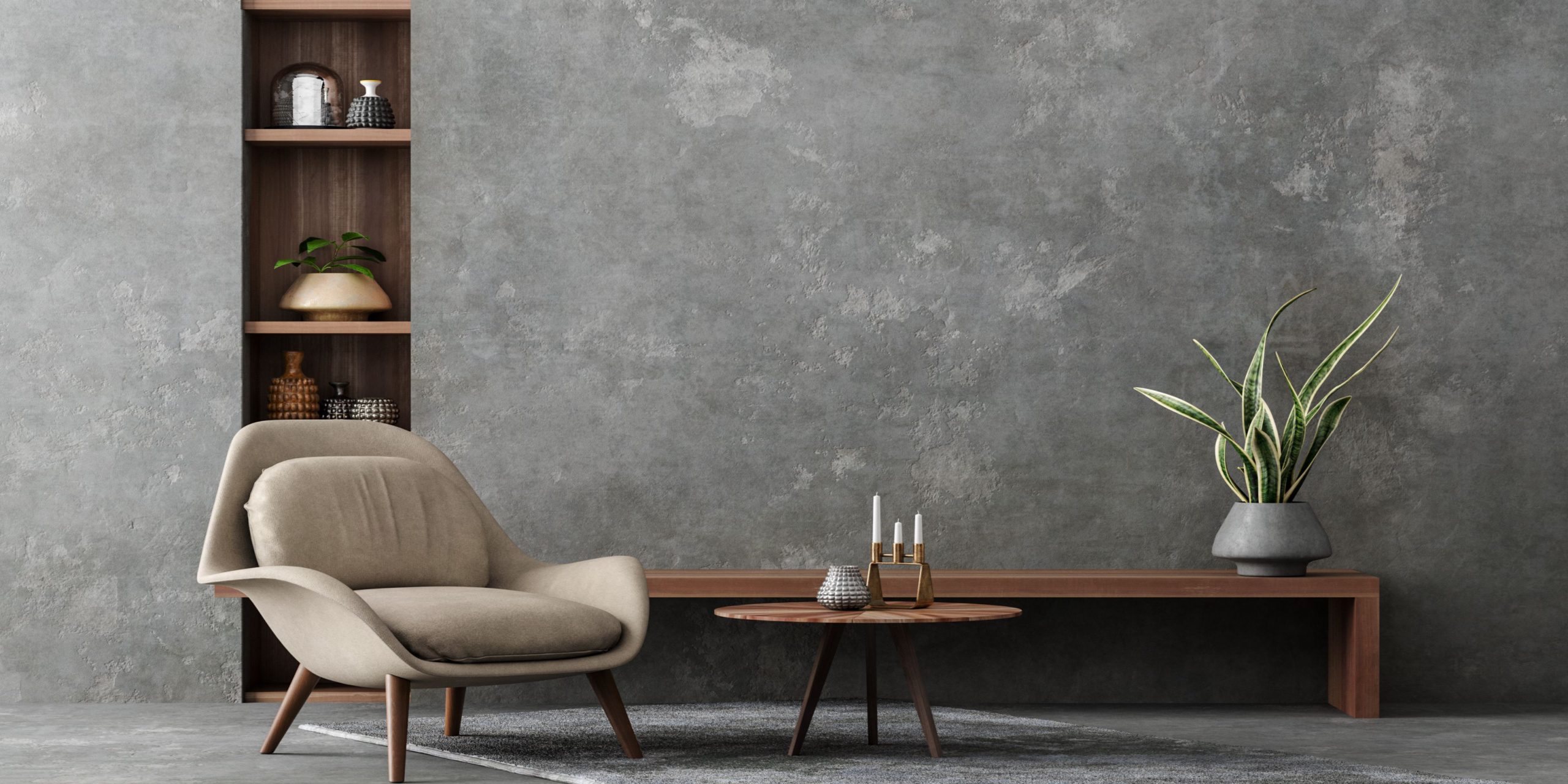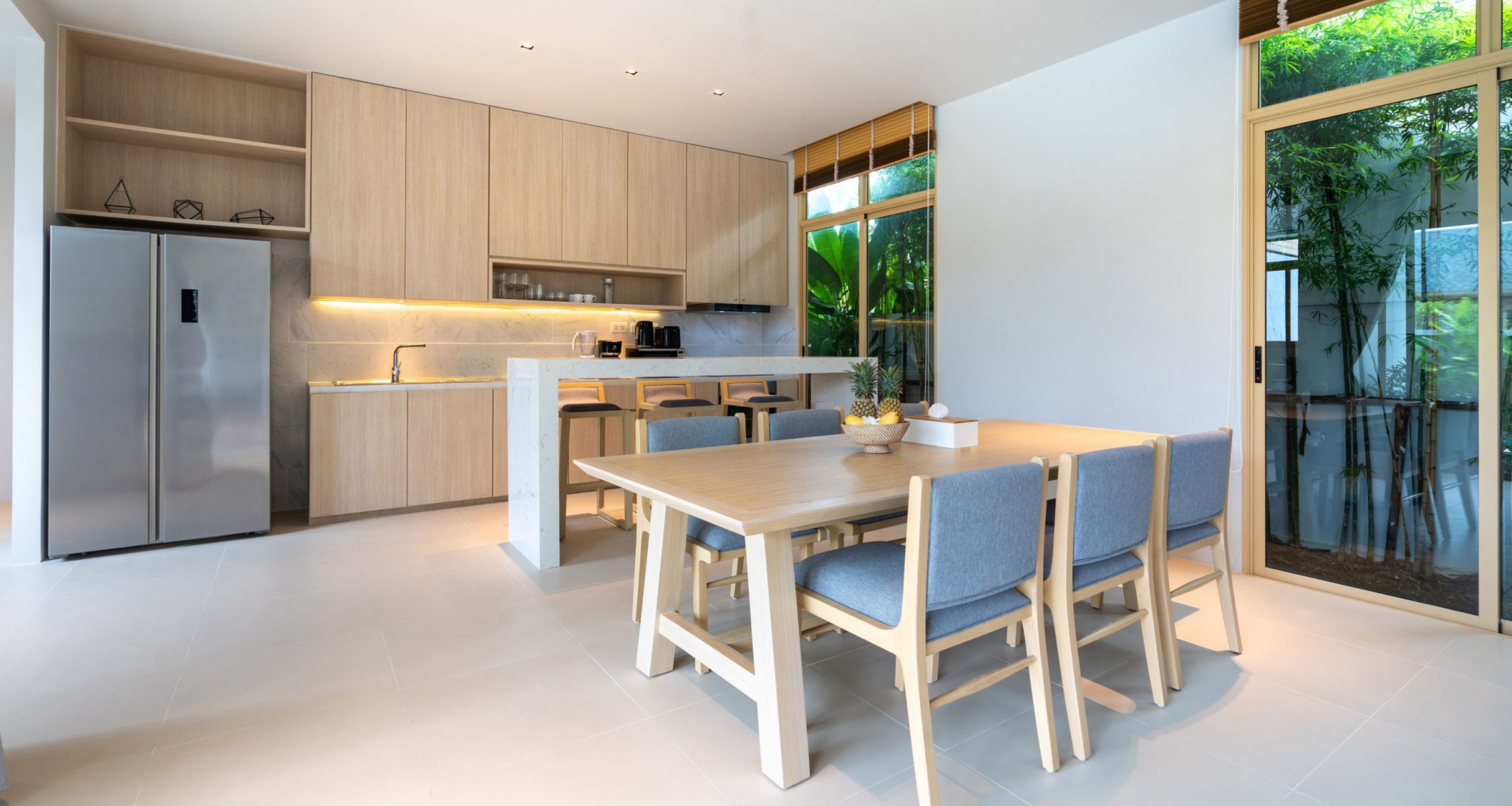No products in the basket.
Do you dream of a home that feels both stylish and inviting? If so, modern interior design might be the perfect answer for you! This design aesthetic prioritises clean lines, functionality, and a touch of the unexpected, creating spaces that are both beautiful and livable.
But where do you even begin? Whether you’re a seasoned design enthusiast or just starting to explore your options, this blog is your one-stop shop for modern interior design. In this blog, we will cover everything from picking the perfect colour scheme to choosing furniture to add those modern touches that will help you transform your space into a modern masterpiece. So buckle up and get ready to transform your home into one that reflects your personality!
What do you mean by Modern Interior Design?
Modern interior design is a style characterised by a clean, uncluttered look that focuses on function and simplicity. Originating in the early to mid-20th century, this design movement embraced the principles of modernism, prioritising practicality and the use of new materials and technologies. Moreover, it is a timeless approach that continues to be popular in homes and commercial spaces today.
Key Elements of Modern Interior Design

Are you confused about how you can transform your space with modern interior design? If so, understanding the key elements of modern interior design can help you implement it in your space. Here are some of the elements that are included in modern interior design:
Minimalism
The core element of modern interior design is minimalism. This means using only the essentials to create a clean and uncluttered space. Moreover, every item in the room should have a purpose and contribute to the overall aesthetic.
Clean Lines
Modern interior design favours clean, straight lines. This can be seen in everything, from the architecture to the furniture. The goal here is to create a sense of order and structure.
Neutral Colour Palette
A neutral colour palette is a key characteristic of modern design. Whites, greys, and beiges are commonly used to create a calm and serene environment. However, bold accent colours can also be introduced to add interest and personality.
Materials and Textures
Modern interior design isn’t just about clean lines and open spaces; it’s also about the materials and textures you choose to bring your vision to life. These elements create a sensory experience, adding warmth, depth, and personality to your space. Here’s how you can utilise materials and textures to build the foundation of your modern haven:
- Natural Materials: Natural materials like wood, stone, and metal are often used in modern interior design. These materials add warmth and texture to a space, making it feel more inviting.
- Synthetic Materials: In addition to natural materials, modern design also embraces synthetic materials such as plastic, glass, and concrete. These materials are often used in innovative ways to create sleek and stylish furnishings.
- Mixing Textures: A key to achieving a modern look is mixing different textures. Combining smooth, glossy surfaces with rough, matte ones can create a dynamic and visually interesting space.
Role of Furniture in Modern Interior Design

Furniture is far more than just an object that fills space in a modern interior. It’s the foundation that sets the tone, defines areas, and reflects the personality of the homeowner. Here’s how modern furniture plays a vital role in crafting a stylish and functional living environment:
- Functional Furniture: Functionality is a core principle of modern design. Furniture should not only look good but also serve a practical purpose. This means opting for pieces that offer storage solutions or can be easily adapted for different uses.
- Statement Pieces: Modern design is often associated with simplicity. However, it doesn’t imply it’s uninteresting. Moreover, incorporating a statement piece, such as a bold sofa or an eye-catching coffee table, can add a focal point to the room.
- Innovative Designs: Modern furniture often features innovative designs that push the boundaries of traditional furniture making. This can include multi-functional pieces or those made from unconventional materials.
Lighting Techniques for Modern Interior Design

Lighting is the magic ingredient that transforms a modern space from simply furnished to feeling truly designed and connected. It goes beyond illumination, setting the mood, highlighting architectural features, and creating a sense of drama. Some of the vital techniques include:
- Layering: Combining ambient, task, and accent lighting for overall illumination and to highlight specific areas.
- Dimming & Control: Using dimmers and smart systems for adaptable lighting and mood control.
- Natural Light: Maximising natural light with windows, skylights, and mirrors.
- Light & Shadow Play: Uplighting, wall washing, and backlighting add depth and drama.
- Statement Fixtures: Choosing lighting fixtures that complement your modern design aesthetic.
Tips for Space Utilisation
Space planning is one of the significant factors in transforming your space into a modern interior design. Here are some of the tips you can follow for space utilisation:
- Utilise Vertical Space: Often, we focus solely on floor space, forgetting the potential above our heads. Hence, use tall bookshelves, hanging planters, and wall-mounted storage units to keep the floor uncluttered and provide ample storage.
- Opt for Light Colours: Light colours reflect natural light, making rooms appear larger and more open. Pair with strategically placed mirrors to amplify the sense of space.
- Keep It Minimal: Modern interior design often favours a minimalist approach. Thus, adopt a minimalist approach by keeping spaces free from unnecessary clutter and maintaining a clean and streamlined look.
- Invest in Built-In Storage: Custom-built storage solutions can be customised to fit your specific needs and the unique dimensions of your home. Therefore, consider built-in wardrobes, under-stairs storage, or bespoke shelving units.
- Create Open Plan Areas: Whenever possible, opt for an open plan layout. By removing unnecessary walls, you can create a more fluid and flexible living space. Moreover, this design not only maximises space but also allows for better social interaction and movement within your home.
- Use Mirrors Strategically: Mirrors are a powerful tool in space utilisation. They reflect light and can create the illusion of a larger space. Hence, place mirrors opposite windows or in narrow hallways to increase the sense of openness and depth.
- Choose Slimline Furniture: Select furniture with sleek designs to avoid overwhelming the space, offering elegance without taking up too much room.
- Incorporate Sliding Doors: Traditional doors require space to swing open, which can be restrictive in smaller rooms. However, sliding doors save space and offer a modern aesthetic, particularly useful in creating flexible partitions in open-plan areas.

Colour Palettes for Modern Interior Design
Choosing the right colour palette is important in modern interior design. Here are some popular colour palettes and tips:
- Neutral Tones: Neutral colours like white, beige, grey, and taupe create a clean, serene backdrop that makes your space feel larger and more open. Also, layering different shades adds depth and interest.
- Monochromatic Schemes: Using varying shades of a single colour, such as different tones of grey, creates a cohesive and modern look. Moreover, improve this scheme with textures and patterns.
- Bold Accents: Add personality with bold accent colours like deep blue, emerald green, and mustard yellow on feature walls, furniture, or accessories. Use it sparingly to avoid overpowering your space.
- Earthy Hues: Earthy colours like terracotta, olive green, and warm browns bring warmth and a natural feel to modern interiors. These hues work well with natural materials like wood and stone.
- Pastel Colours: Soft pastels like pinks, blues, and greens create a gentle and calming effect, perfect for a light and airy feel. Hence, use pastels throughout a room or as accents to soften more intense colours.
- Black and White: A classic black-and-white palette offers a timeless, elegant look. As a result, this combination provides a striking contrast and can be easily accented with other colours for added interest.
Using Technology to Complement Modernist Interior Design

Technology is a vital part of our daily lives, making every task easier and more efficient. Modern interior design also requires the integration of technology to complete the look. A breakdown of the following technologies to use includes:
- Smart Lighting System: Control your home’s ambience with smart lighting. Adjust brightness and colour with voice or app controls for convenience and sophistication.
- Integrated Audio Systems: Keep your space tidy with built-in speakers and wireless sound systems, providing high-quality audio without clutter.
- Automated Climate Control: Smart thermostats maintain optimal temperatures, improving comfort and energy efficiency by learning and adjusting to your preferences.
- Home Automation Hubs: Centralise control of your smart devices with home automation hubs, making management of lighting, security, and appliances efficient and user-friendly.
- Advanced Home Security: Improve safety with smart locks, video doorbells, and surveillance cameras that blend seamlessly with modern design, offering remote monitoring and real-time alerts.
- Smart Appliances: Incorporate smart refrigerators, ovens, and washing machines to enhance convenience and efficiency with remote control and maintenance alerts.
- Digital Art Displays: Use digital art frames to showcase rotating collections of artwork or photos, keeping your décor fresh and personalised.
- Wireless Charging Stations: Integrate wireless charging stations into furniture for a convenient and clutter-free solution to keep your devices charged.
- Voice-Activated Assistants: Utilise voice-activated assistants to control various aspects of your home, from playing music to setting reminders. Hence, it improves your interactivity.
- Virtual Reality and Augmented Reality: Use VR and AR tools to visualise redesigns or renovations, ensuring design decisions align with your vision before making physical changes.
Why choose Modern Interior Design?
Modern interior design is perfect for those who appreciate clean, open spaces and a modernised aesthetic. Moreover, it promotes a sense of calm and order. Additionally, the focus on functionality ensures that every element serves a purpose, leading to a more efficient and enjoyable living experience.
Furthermore, you can visit and enrol in our Level 5 Interior Design course to adopt modern interior design for your space. Our course teaches you its versatility, which will allow you to express your presentation through the careful selection of furniture, art, and decor, ensuring that each space reflects your unique taste.
Bonus: Modern Classic Interior Design
Well, so far we have talked about how modern interior design focuses on minimalism and simplicity. However, there is a subcategory of this style called Modern Classic Interior design. This style focuses on keeping minimalism while also using fancy furniture and lighting, which can result in a very interesting look for your rooms.
A modern classic interior design consists of minimalistic colour palettes and overboard fancy decorations. Moreover, this style prefers the use of extremely high-quality materials while being simple yet aesthetic. In addition, Modern Classic Interior Designs also ensures lighting that tries to make the room look modern while also giving a very royal and immersive feeling.





